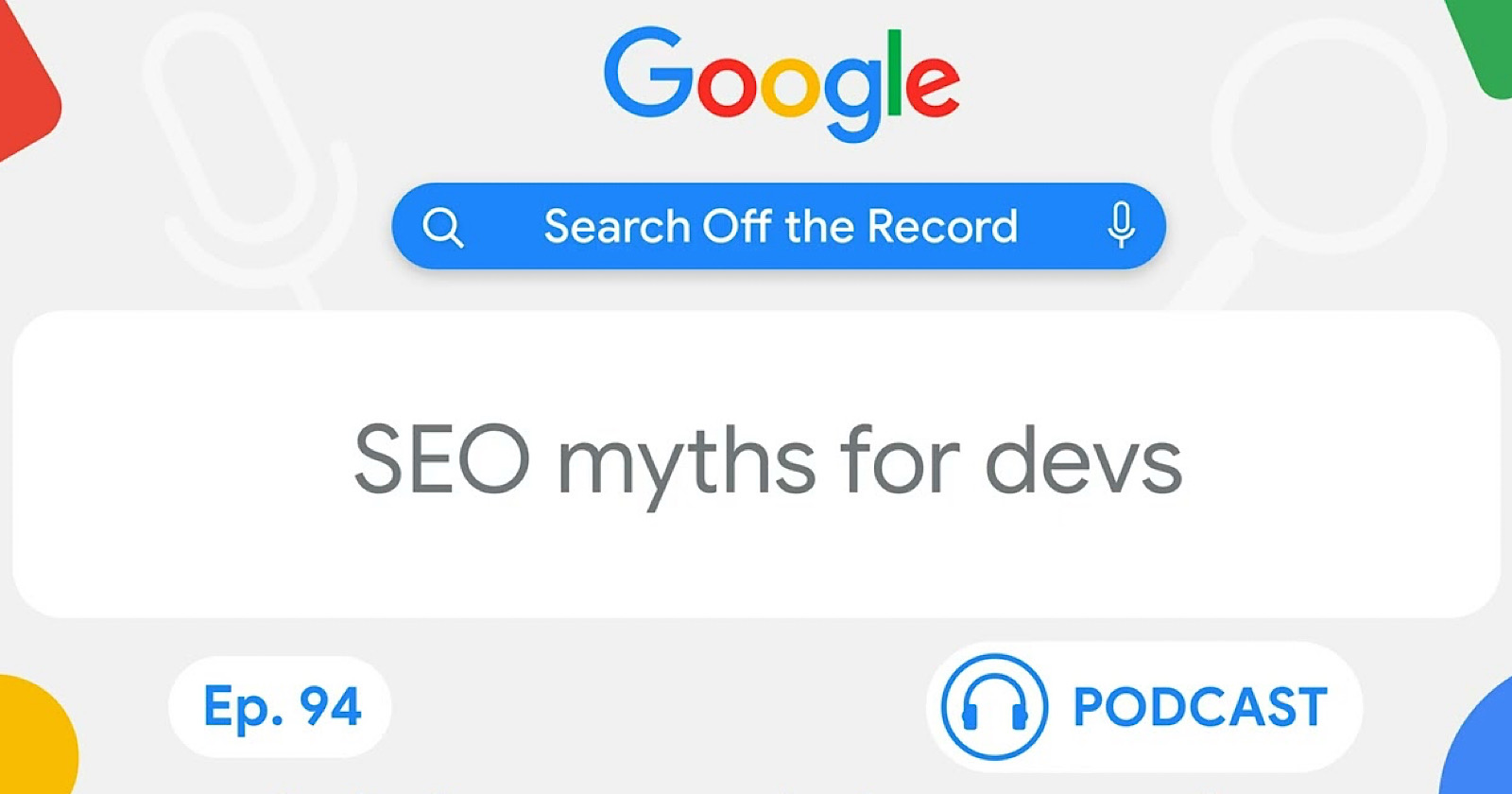8 Most Important Types of Keywords for SEO
If you just want a quick overview of the types, see the cheat sheet below. Read the full article to learn more about their importance and how to find them for your SEO projects. Seed keywords are...
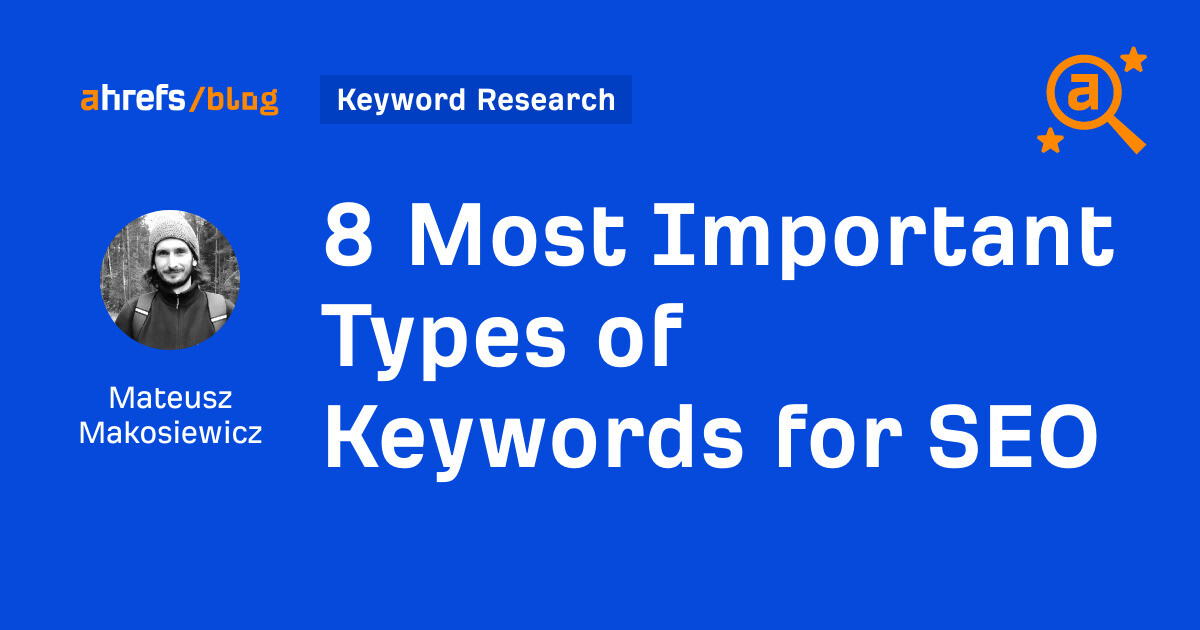
We’ll take a look at the types of organic keywords everyone interested in SEO should know. If you just want a quick overview of the types, see the cheat sheet below. Read the full article to learn more about their importance and how to find them for your SEO projects. Seed keywords are words or phrases that you can use as the starting point in a keyword research process to unlock more keywords. If lucrative keywords are the output of keyword research, seed keywords are the input. There are a lot of ways you can come up with good seed keywords: And more. Let’s do a quick example. Say you want to start a food blog. You come to a competitor’s blog to look for ideas, and you find a recipe for “vegan meatballs.” You can write a similar recipe or use that as a seed keyword to find out if people search for any variations of the dish. Here are a few you’ll find in Ahrefs’ Keywords Explorer. In our other resources, you will find more great seed keyword sources with detailed instructions: Search intent is the reason behind the search query (i.e., keyword). It’s what people expect to find by using a keyword in a search engine. Roughly speaking, we can differentiate four basic types of intent keywords: On top of that, we’ve got so-called high-intent keywords that indicate the user is close to making a purchase; commercial investigation and transactional keywords combined. Note Search intent is not a feature of the keyword but a feature of the SERP. Categorizing keywords by search intent is common, but it’s not entirely technically correct. This means that search intent can change over time, and search engines can show a SERP with mixed intent (aka fractured intent). The more general the keyword, the more likely it will show a mixed intent SERP. For example, if you Google “coffee,” you will see nearby coffee shops, a couple of big coffee brands, and articles on coffee. Check out our guide on mixed search intent to learn more. You can use modifier words. Here are a few ideas: And here’s how the process would look in Keywords Explorer: Long-tail keywords are search queries that get a small number of searches per month. They’ve got their name from the so-called search demand curve. For any topic, the most popular searches are the short-tails (also called the fat heads or the head terms), followed by the middle, and lastly the long-tails. Targeting long-tail keywords is a common tactic in SEO: There are two types of long-tail keywords. There are topical long-tail keywords, which are topics in themselves. And there are supporting long-tail keywords, which are less popular ways of searching for the topical ones. It’s an important difference because it only makes sense to target topical long-tail keywords. Here’s an easy way to memorize it: think of them as sets and subsets. So here’s how to find topical long-tail keywords in Keywords Explorer: Tip If you don’t find interesting keywords, try increasing the volume and Traffic Potential. There is no “official” volume threshold for long-tail keywords. It’s largely dependent on the industry. The more search demand the head term has, the longer the “tail.” Low-competition keywords, or low-hanging keywords, are the keywords that are typically easier to rank for. Their claim to fame is that they can give faster results in the short term, so they are often recommended to new websites without a strong link profile. The easiest way to find low-competition keywords is to use an SEO tool featuring a difficulty score. At Ahrefs, we simply call it Keyword Difficulty (KD). This method will filter out keywords that are dominated by pages with a lot of backlinks. However, there is still a possibility that some of the keywords with low KD will be tougher to rank because of: You can further refine that list by using the “Lowest DR” filter by inputting your site’s DR. This will show you if websites with your DR or lower already rank in the top 10 or top five. Niche keywords are clear and specific topics that appeal to relatively small, often specialized parts of a given market. They tend to be easier to rank for. And because of their specificity, they can be high-intent ones. In other words, each niche keyword can send you small but highly qualified traffic in a short time. Put together, they can be a pillar of a long-tail business (selling low volumes of rare items). Example keyword: “vegan baby soap.” It’s got a low search volume, but it’s very specific. And this product is probably quite rare. So there’s a high chance that the searcher will be in the market for such a product. Plus, it should be quite easy to rank for. Niche keywords are similar to long-tail keywords. However, niche keywords are not only about search demand. There’s a market aspect to it, so you’ll need to spend more time researching the actual thing the keyword stands for. For example, this keyword has traffic potential but doesn’t denote an existing product. It’s a misspelling. To solve this, you can use a couple of ideas for refining your keyword list. Here’s an example: And this is how we discover a niche for consumers who don’t want their soap to have a fragrance. Ranking for non-branded keywords allows you to attract people who are searching for products or services related to your business but may not necessarily know your brand. Ranking for branded keywords allows you to attract people who are specifically searching for information about your company. To illustrate the difference: As long as the keyword doesn’t contain your brand or product’s name, it’s an unbranded keyword. You can choose any of the methods from this article to find those. To find branded keywords, you’ve got three options. Option 1. If you paste your brand and products in Keywords Explorer, you will see branded keywords along with their SEO metrics and who ranks for them. Option 2. You can view only the branded keywords where you rank using Ahrefs’ Site Explorer. Just include the branded words as modifiers. You can also use the Position filter to see underperforming keywords. Finally, you can check all the branded keywords where you don’t rank. To do that, you need to compare the list of all branded keywords to the keywords where you rank. Here’s a step-by-step tutorial on how to do this, plus more information on branded search. Who wouldn’t want to see their competitors’ keywords? Among many reasons, those keywords are a goldmine of topics for your own site. When you know a competitor’s keywords, you can: There are two ways. First, you can go to Site Explorer, paste your competitor’s URL, and go to the Organic keywords report. From there, you can use filters to refine the keywords list. For example, low-competition keywords or keywords containing specific words. You can also view the competitors’ keywords where you don’t rank. In Site Explorer, there’s a special tool for it called Content Gap. All you need to do is paste competing domains. Tip Your market competitors are not necessarily the same as your organic competitors. So if you want to see who else ranks for your keywords, use the Organic competitors report. Besides a list of domains, you will see keywords that you share and keywords where you don’t rank. The primary keyword is the main topic of a page. It’s also the single keyword to optimize a page for or, in other words, the reason to do keyword research in the first place. Secondary keywords are keywords closely related to the primary keyword that you’re targeting with your page. To illustrate, if the primary keyword is the title of the book, you can use secondary keywords as subtopics. To find good primary keywords, you need to do proper keyword research. Your primary keywords should: See our full guide on keyword research to learn all the details. Finding secondary keywords depends on your primary keywords (as these are related). You can use the Related terms report in Keywords Explorer or the Content Gap tool in Site Explorer to compare top-ranking articles for a given keyword. Those are the eight important types of keywords. Here are a few types that are just worth knowing: Got questions or comments? Ping me on Twitter or Mastodon. 
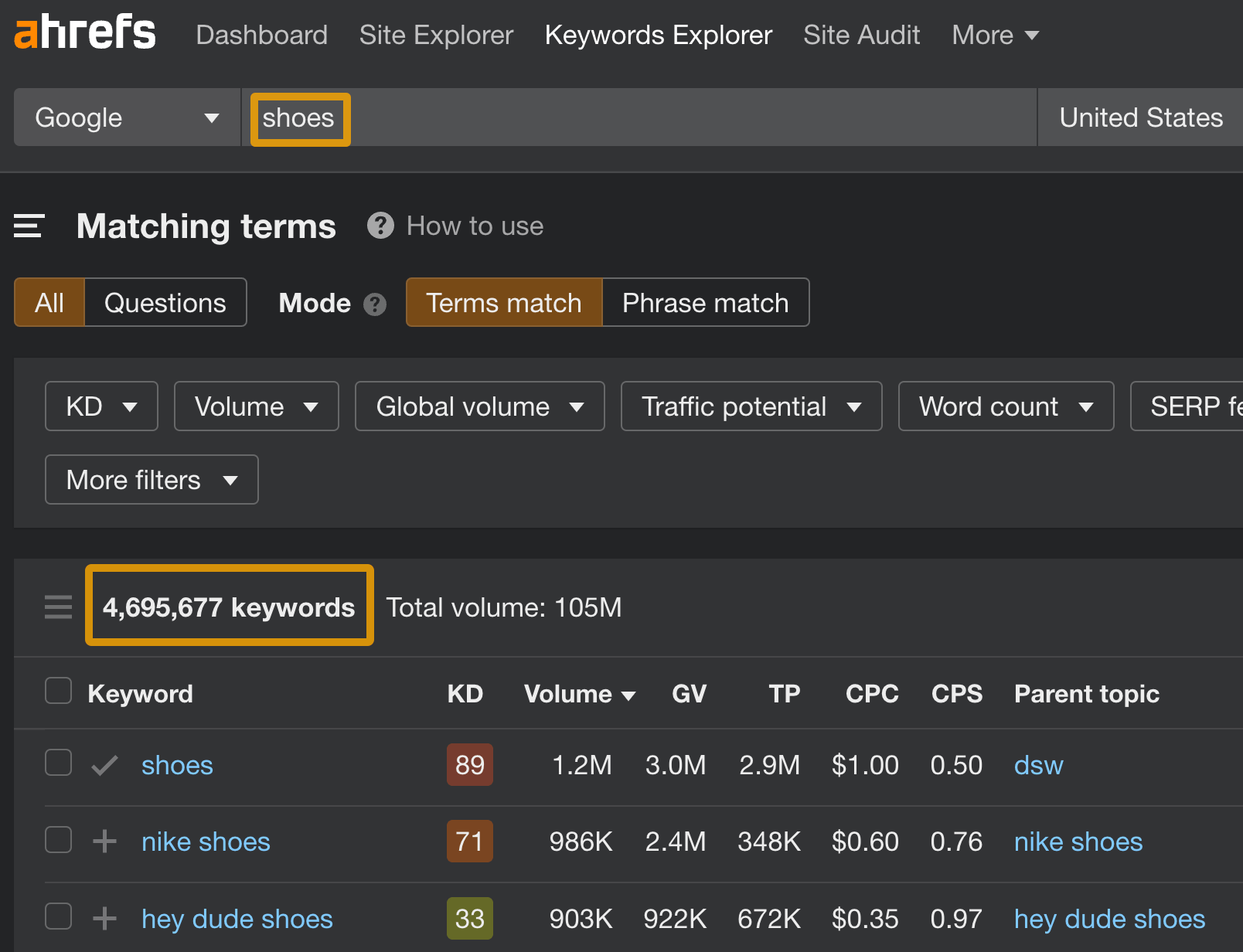 In this example, “shoes” is the seed keyword generating millions of keyword ideas in Ahrefs’ Keywords Explorer.
In this example, “shoes” is the seed keyword generating millions of keyword ideas in Ahrefs’ Keywords Explorer.How to find
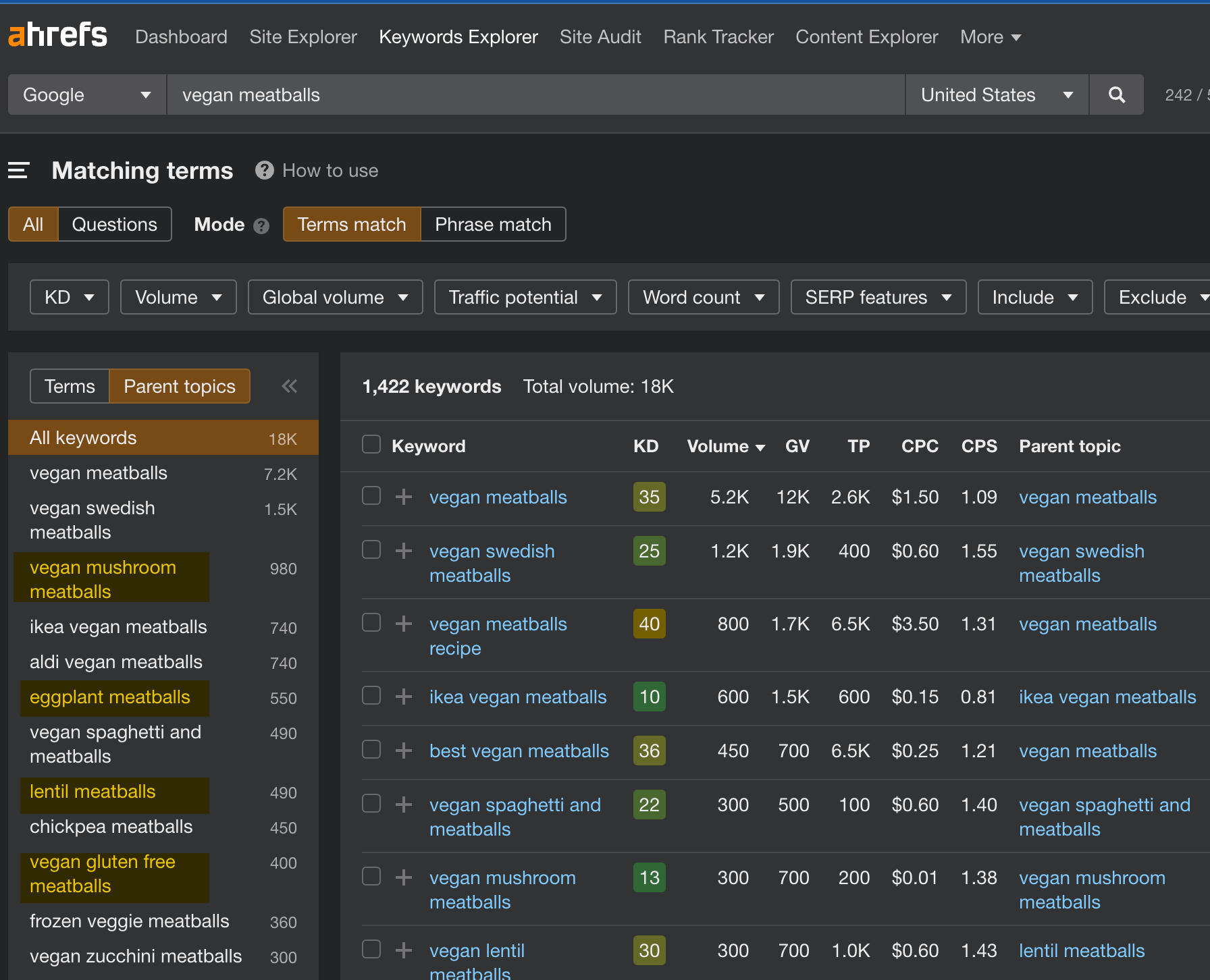
How to find
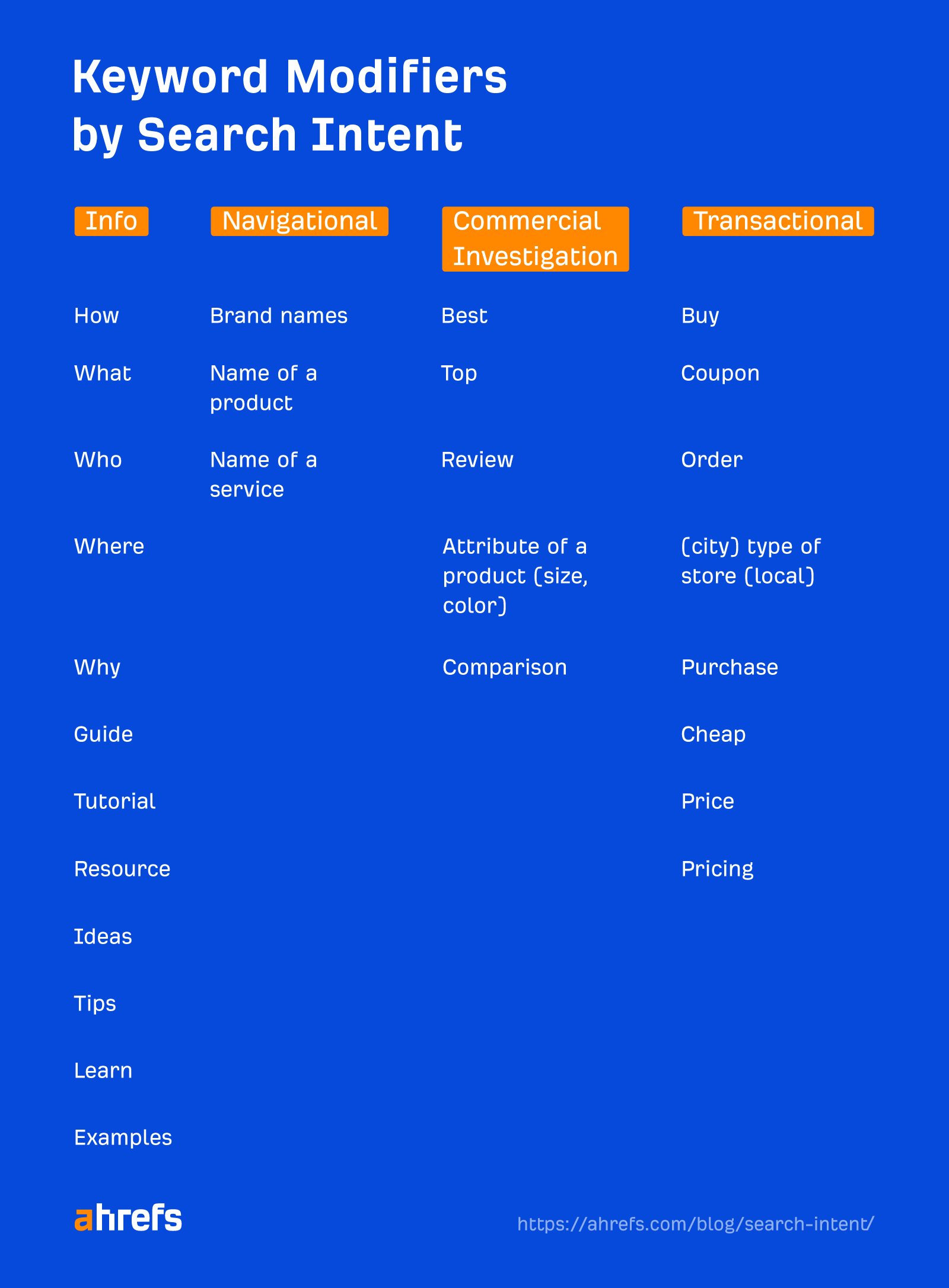

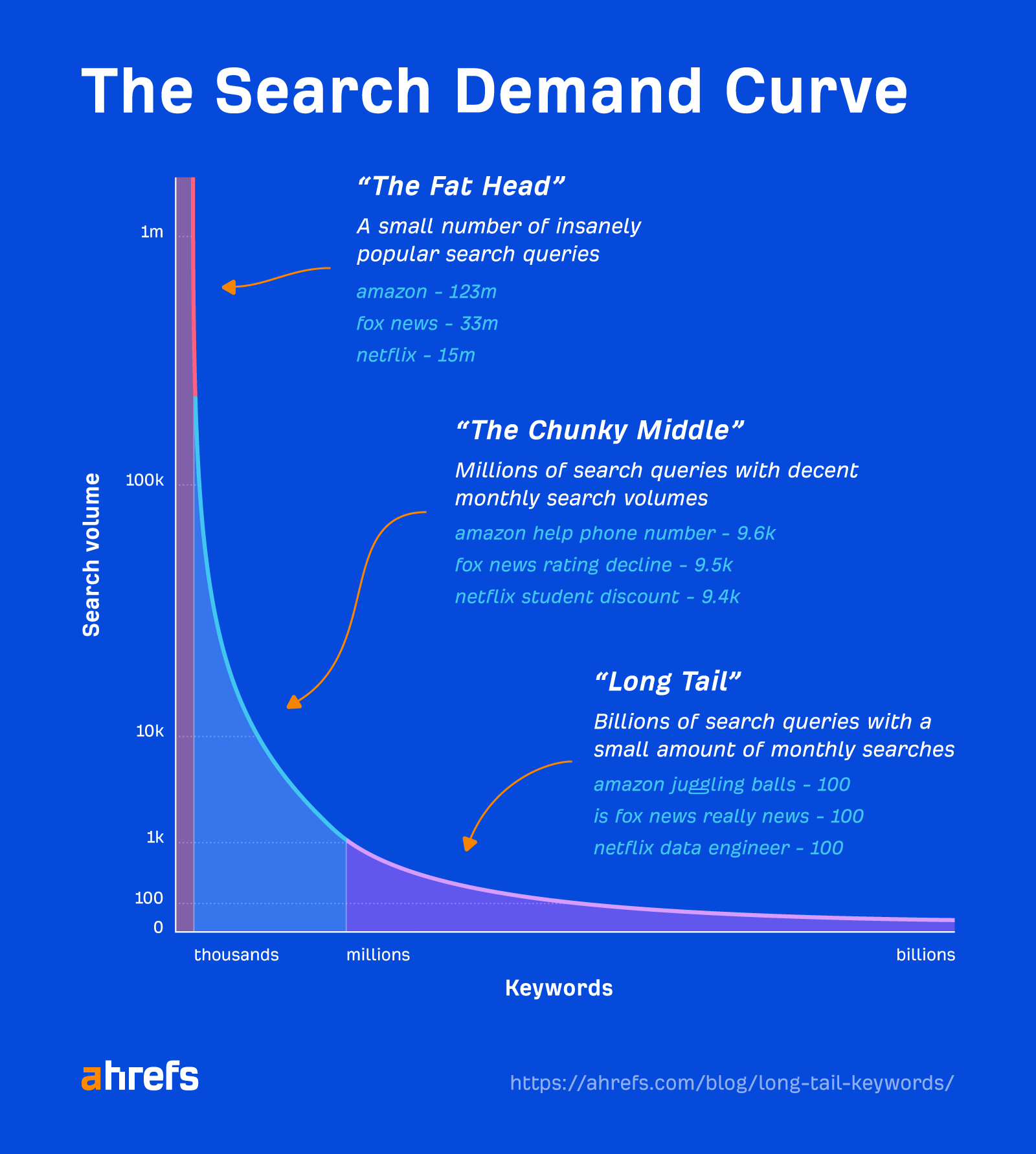
How to find
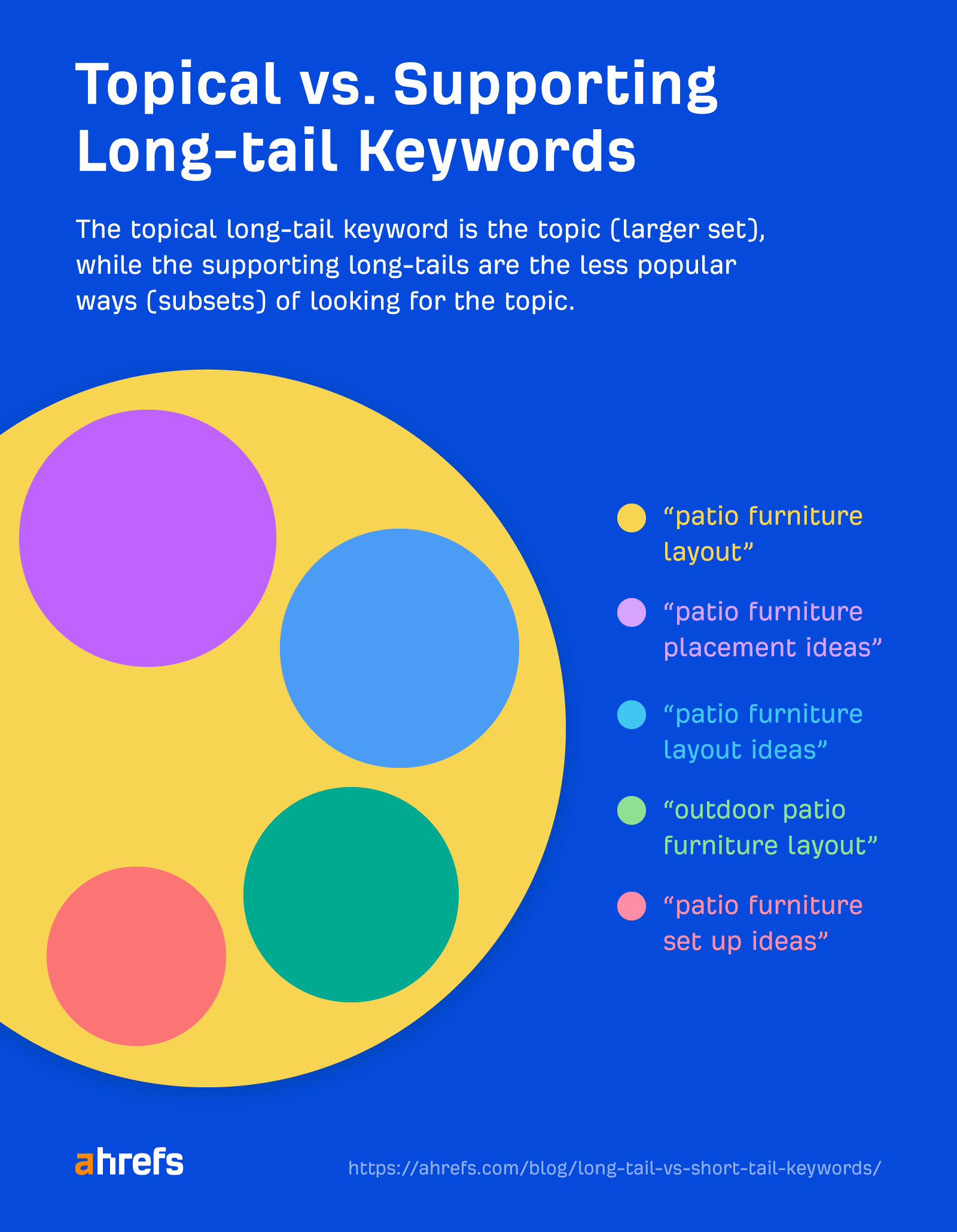

How to find
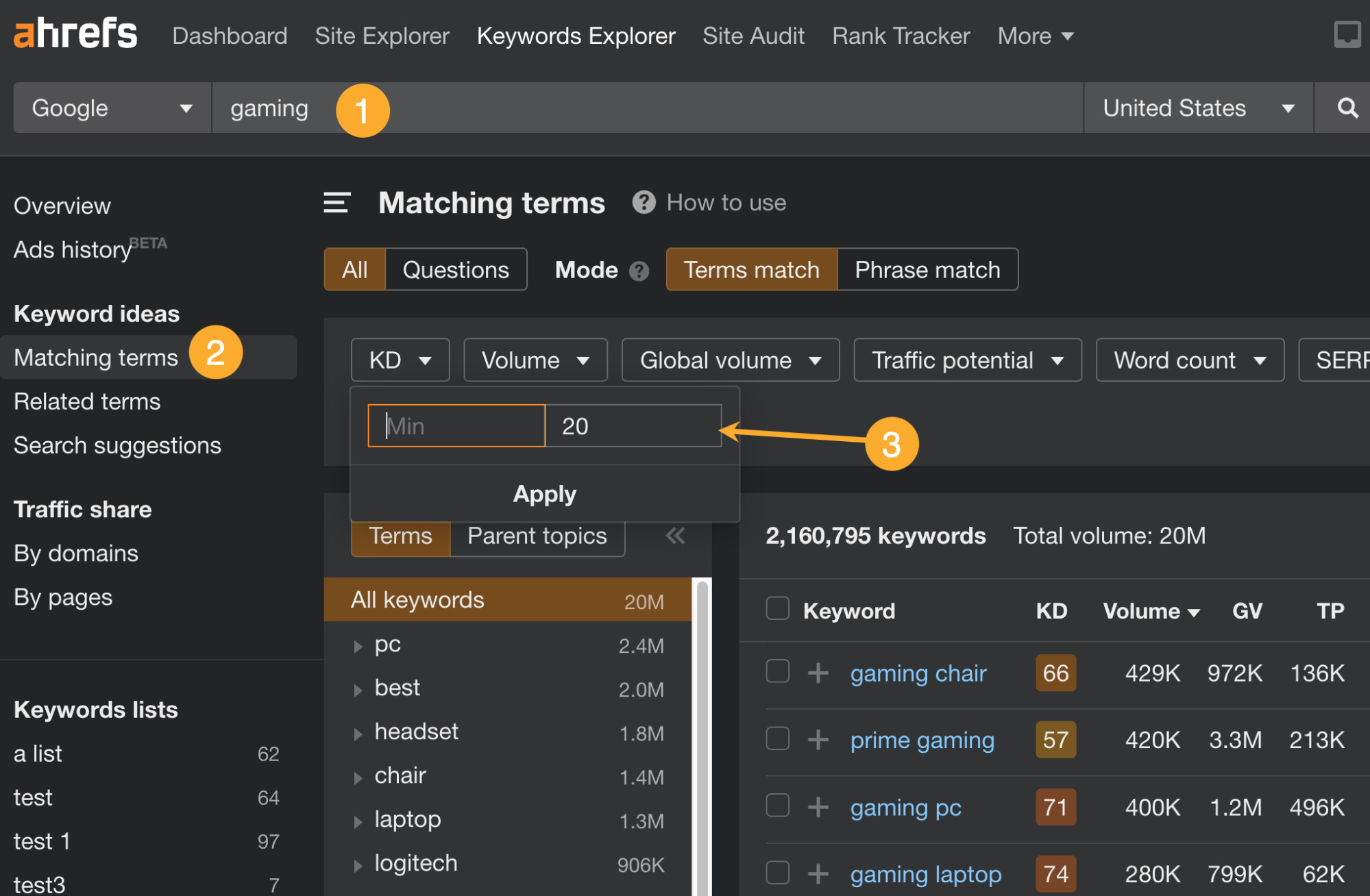


How to find


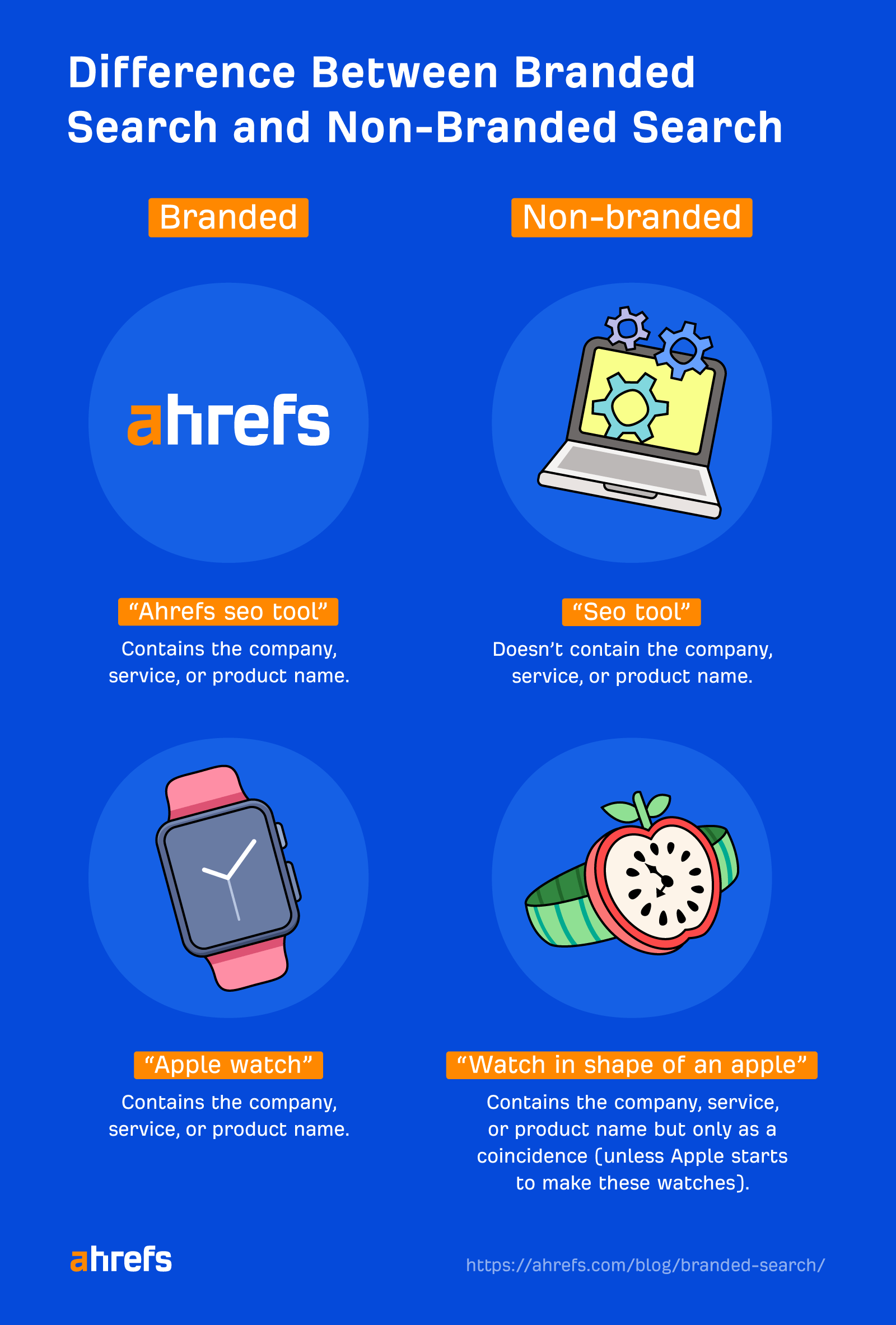
How to find
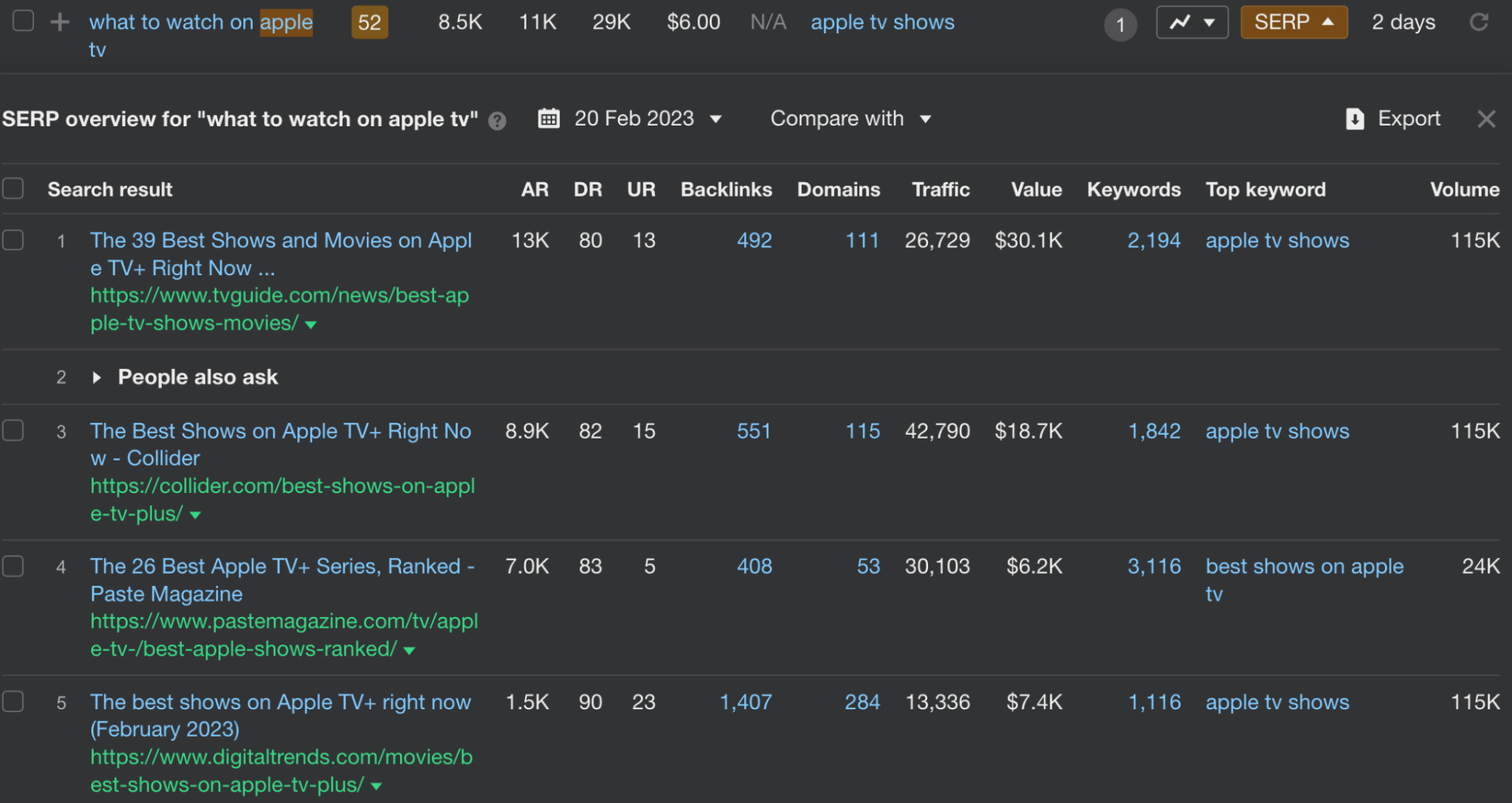

How to find




How to find
 Make sure to enable the “Top 10” toggle.
Make sure to enable the “Top 10” toggle. If you’re using the Content Gap tool for finding secondary keywords, leave the last input blank.
If you’re using the Content Gap tool for finding secondary keywords, leave the last input blank.Final thoughts

 Troov
Troov 























